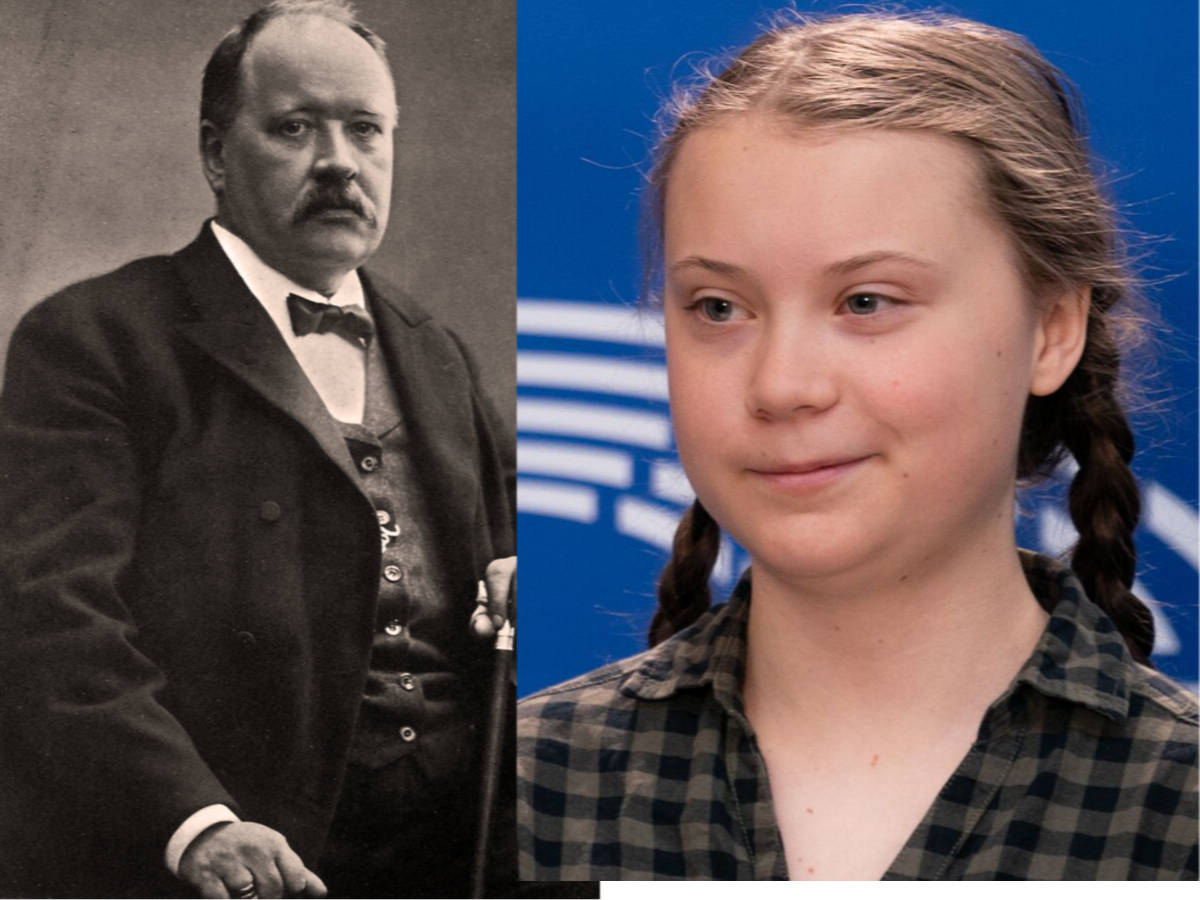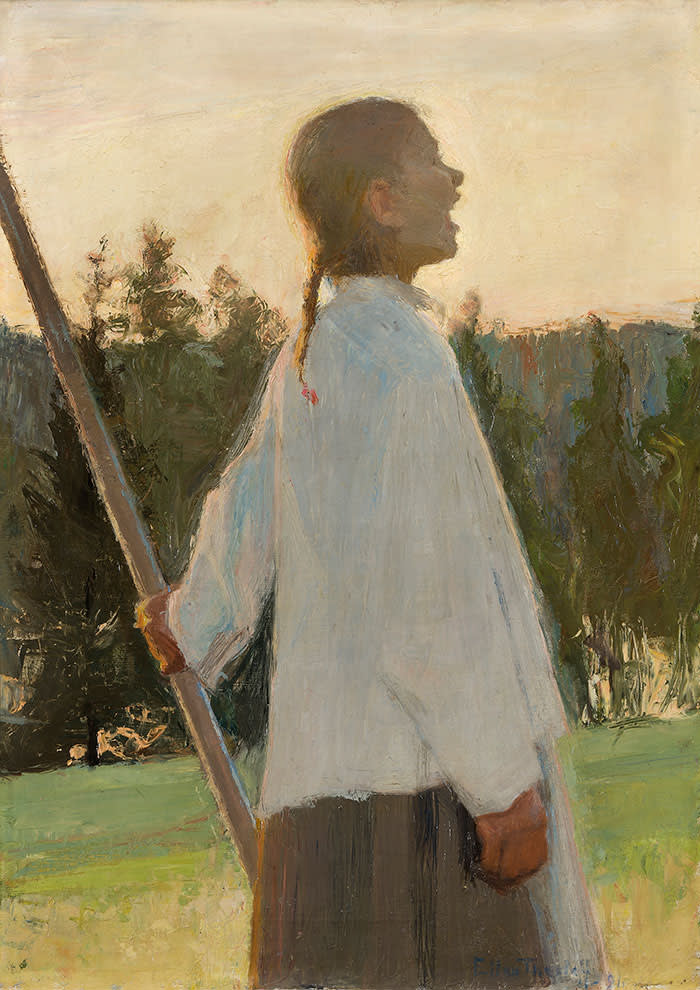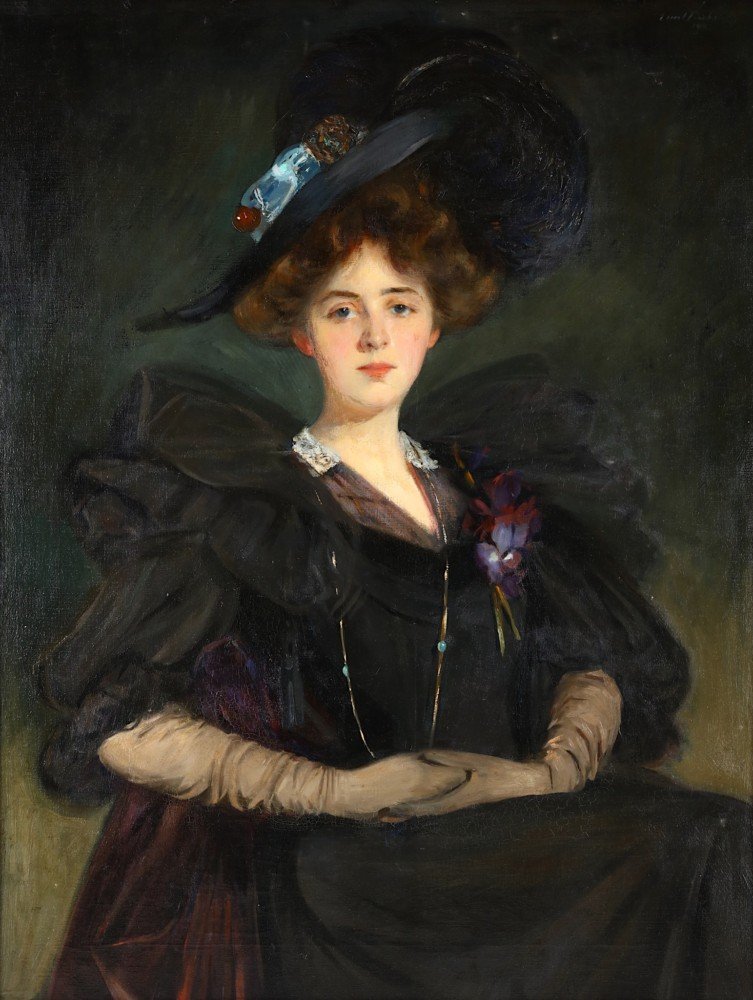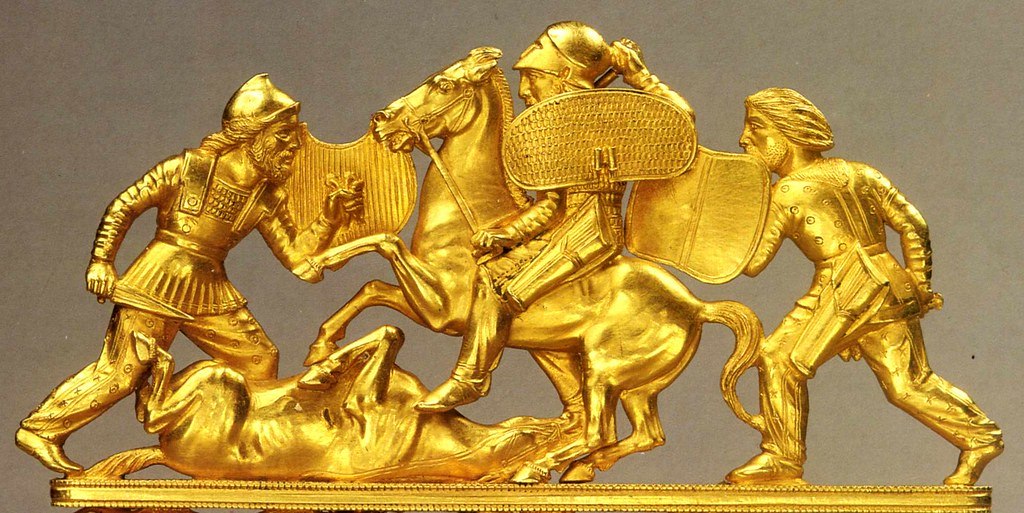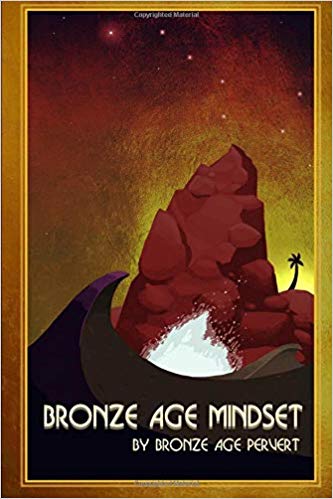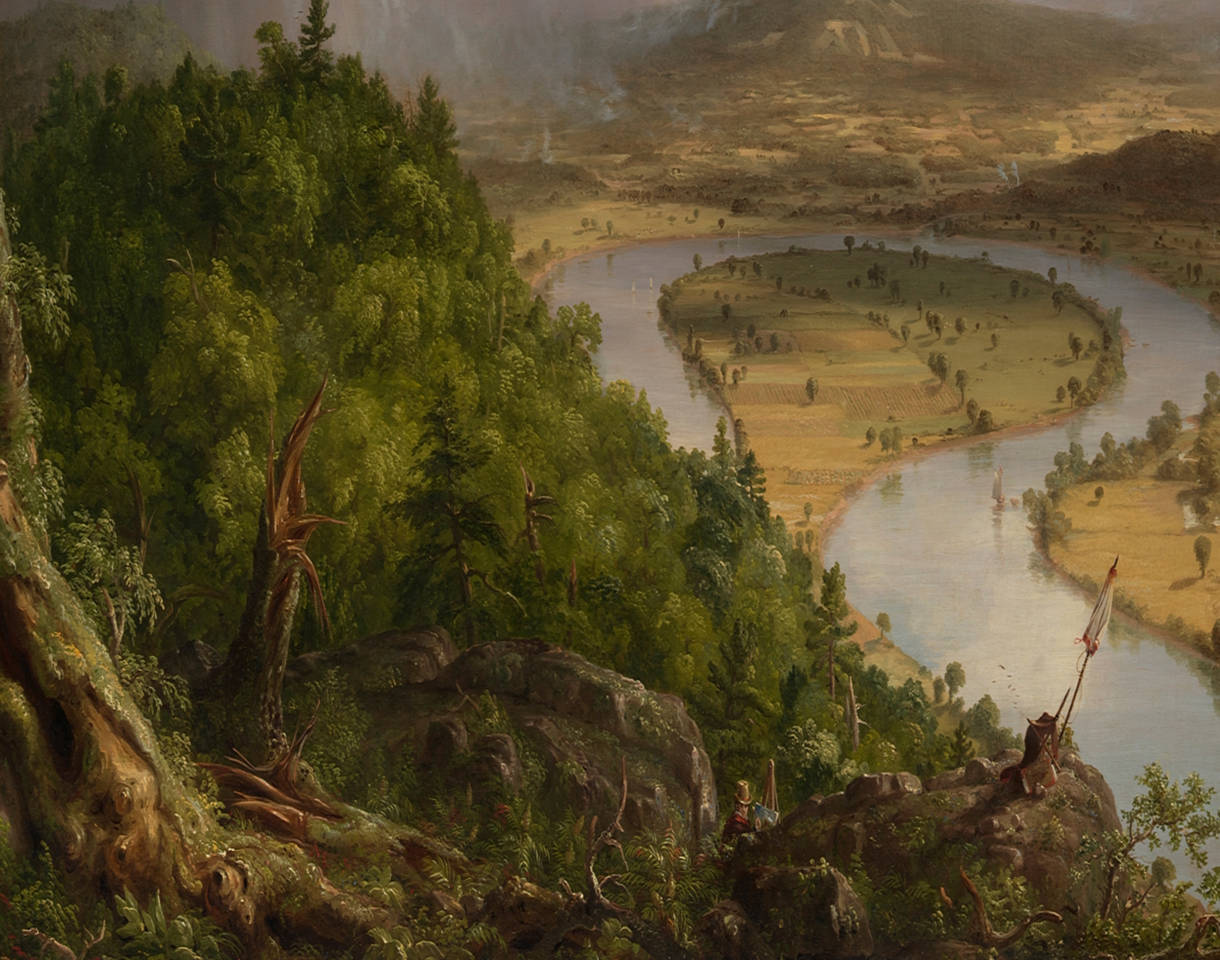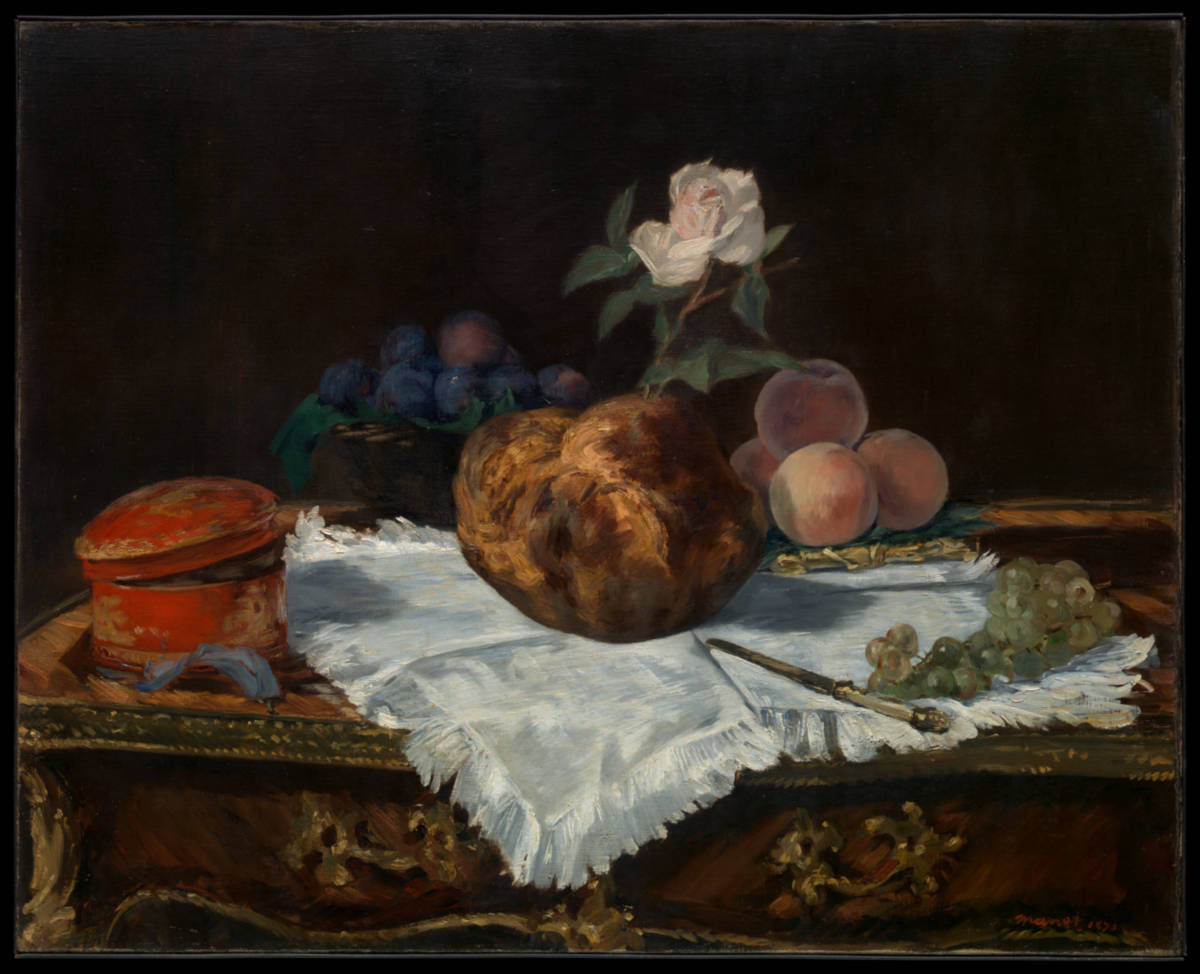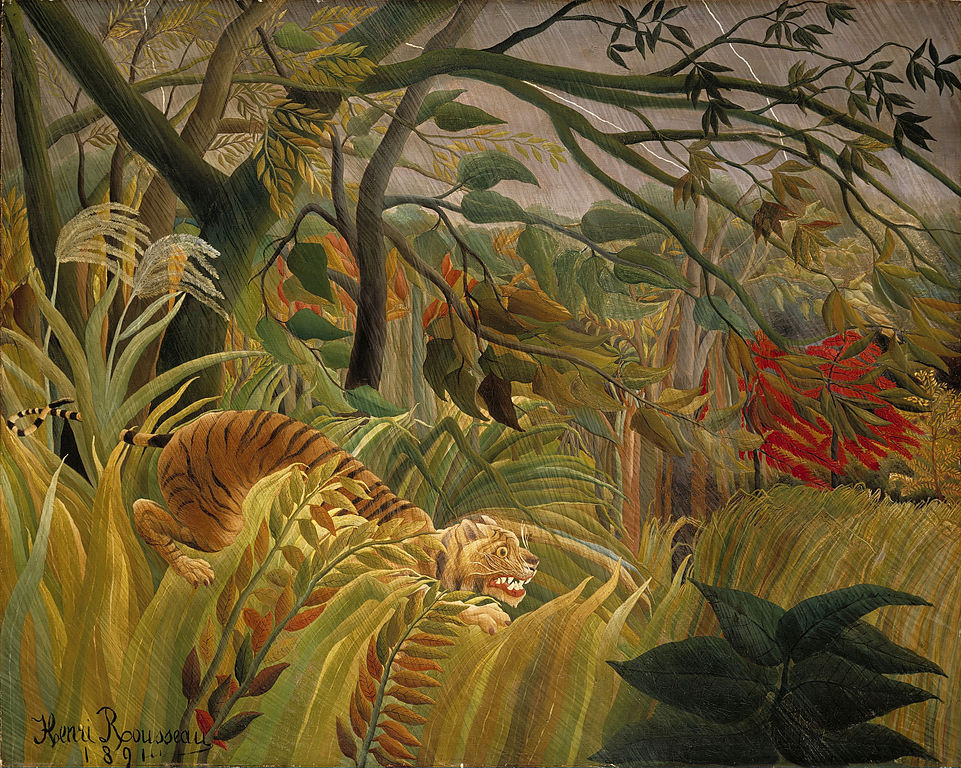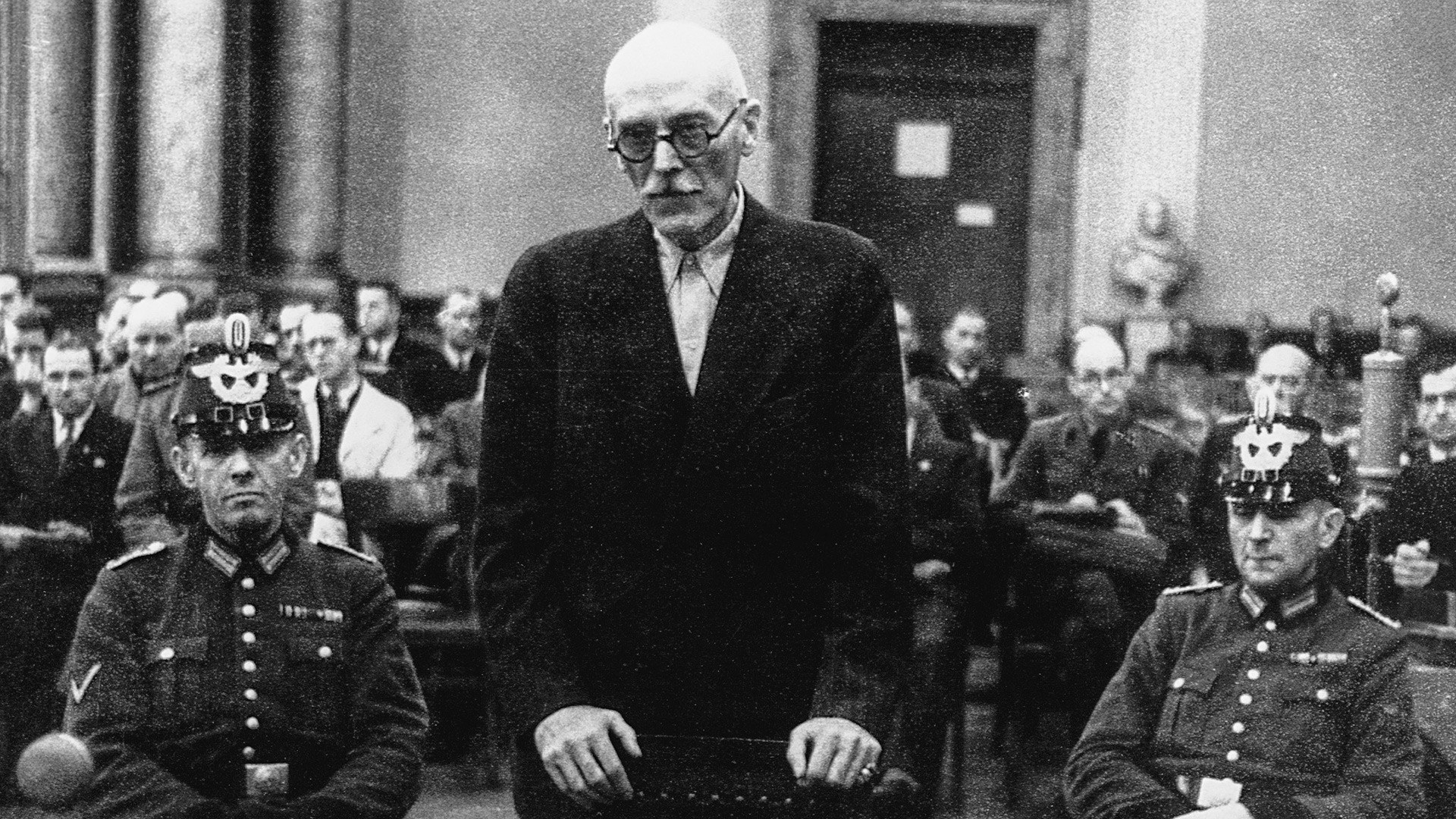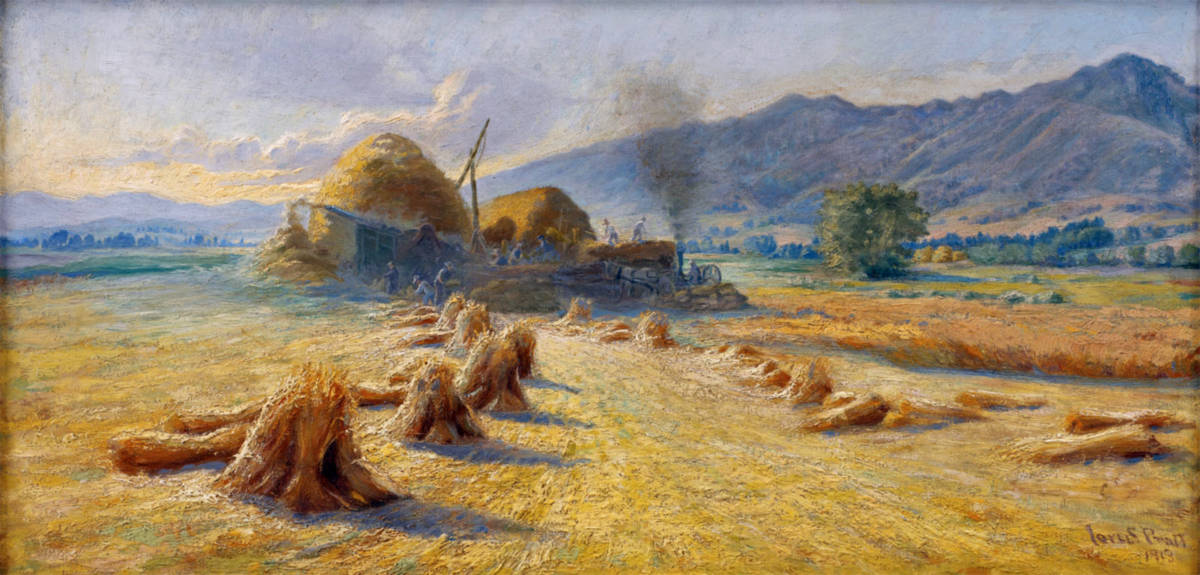I am fascinated by what is to come. For someone who came of age imbibing the narrow, facile, weak, always-second-place conservative pieties of the late 1980s and the 1990s, the chaotic fluidity of today’s Right is something entirely new. There are no straight lines of sight; all is a jumble of splintered mirrors.
In this chaos, of which Trump is only one manifestation, it is a sign of something, or rather of many things, that this self-published book by an pseudonymous author, calling for adoption of a supposed ethics of the Bronze Age, is receiving a lot of attention. And as much as I hate to admit it, or think I hate to admit it, the philosophy that runs through this book is likely to drive a lot of discourse, and action, in coming years.
True, this book is, by most measures, still obscure. It has not been reviewed in the New York Times, though I suspect that it will soon enough start making appearances there, none positive. For now, its traction is only on the Right, but there is a lot of traction there, because Bronze Age Mindset, strange to say, acts to coalesce the fragmented pieces of the Right, especially the youthful, disaffected Right, around a philosophy that rejects many of the more problematic elements of the non-mainstream Right.
Bronze Age Mindset is, I think, an attempt to maneuver around a core problem for new thought on the Right—that a great many of the vocal people on the Right are clowns with stupid ideas, easily used by their enemies and of negative value to a coherent future program. Bronze Age Mindset is best viewed as a cloaked attempt to find an attractive Right philosophy that leaves such clowns, especially the racists, behind, while still capturing those who believe in seeing reality as it is, even though it is forbidden by our rulers.
This attempt to create a new thing is the genius of Bronze Age Mindset, not the actual narrative, a good deal of which is insane—though I think the insanity is mostly a joke designed to distract as the rest of the book strikes home, making it a jujitsu tactic, persuasion disguised with juvenile humor.
Others on the mainstream Right have begun to recognize this. Michael Anton, whom I greatly admire, reviewed Bronze Age Mindset last month for the Claremont Review of Books, not unfavorably, of which more later. I can assure you, if you are not familiar with the Right ecosystem, that this is wholly unprecedented.
If you had said ten years ago that a man of Anton’s prominence, in a publication of such note, would write favorably about a book that demands a military government and a return to pagan ways of thinking, praises men from history who are now viewed as entirely retrograde, and rejects any role for women in public life, among many other sins, all offered with an unapologetic, feral glint, you would have been viewed as crazy. Yet here we are.
But first, of the book. The author of Bronze Age Mindset writes under the pseudonym Bronze Age Pervert. Usually he is referred to as BAP, not so much for simplicity but because endless recitation of the word “pervert” makes most people, including me, wince because it’s tasteless.
No doubt that is the author’s intention in picking the moniker; barbed jokes of this sort characterize much of his writing. His actual name, and everything about him, is a mystery, though he affects Slavic tics in his writing, and a Russian voice narrates a podcast BAP has recently launched, called for no apparent reason “Caribbean Rhythms,” to the six episodes of which I have also listened.
Some people are very focused on who BAP is. I don’t care who BAP is, though I suspect there is some chance, say thirty percent, he is Anton himself. What most of all characterizes BAP, and suggests he is either a fierce auto-didact or someone with an academic background, is constant references to history.
The majority of his historical references are to Ancient Greece. Machiavelli also shows up several times. He refers to other interesting writings, such as Steven Runciman’s truly obscure The White Rajahs. It surprises me that he has not been doxxed; either he is very, very good at covering his tracks, or he has not gotten enough prominence. If and when he is revealed, the results may be very interesting—or completely uninteresting.
Either way, the book rewards close attention, since what BAP says is not always precisely what he means, and this is deliberate. The very first sentences of the book exemplify this. “This is not a book of philosophy. It is exhortation.” But that is a false dichotomy; such head fakes are common in this book.
Bronze Age Mindset is both, and it contains quite a bit of distilled philosophy. Or, rather, applied philosophy. It is meant to be an exposition of “the thought that motivates me and the problem faced by life in ascent and decline.” The philosopher most admired by BAP is Friedrich Nietzsche, although many other philosophers, mainly Greek, ranging from Heraclitus to Empedocles, make appearances, and Schopenhauer is also often featured.
I have no idea if any of what BAP says actually comports with Nietzsche, or Schopenhauer, for that matter, about whom I know nearly nothing, but that is not the point—broadly speaking, BAP’s philosophy is Nietzschean, if by that is meant a post-Christian view focused on hierarchy and power.
The basic points of the book can be boiled down. First, the few matter more than the many. The vast majority of humanity, today and since the dawn of civilization, has led lives of useless distress, under forms of slavery. But in all times and places, some men will not live under slavery. They are who matter. Second, all higher life inherently seeks space and dominance.
Not just territorial space, even more “space to develop inborn powers.” Offering examples from the animal kingdom, BAP says “All of this is higher organism organizing itself to master matter in surrounding space. Successful mastery of this matter leads to development of inborn powers and flourishing of organism. . . .”
What higher life wants is power and freedom, not mere survival and reproduction. This is the teleology of man. Human nature is real; very much is “in the blood,” inborn. Leftists foolishly pretend this is false. Fourth, the proper view on life is the “enchanted worldview.” This is not a reasonable, calm, hyper-rational worldview. It is more like “religious delirium,” and it is what characterizes all great men in their performance of great deeds, from warriors to artists to scientists.
The disenchanted worldview, in contrast, is “the tight-assed attitude of the science cultist and materialist.” It is worthless and no different than the outlook of slaves. And fifth, all these realities, and more, the “star of Nemesis,” have been concealed in our stupid modern world. But they will return, and soon, with fire and slaughter.
All this appears in the first of the four parts of the book. The rest of the book is an expansion and repetition. To give you a flavor, let’s take the second part, titled Parable of Iron Prison. The Iron Prison is the modern world, a place of “brokenness” and “denatured life.” Carl Schmitt is quoted, “They’ve put us out to pasture.” But, in a twist from most complaints about modernity, the modern world’s prison is “the return of a very ancient subjection and brokenness under new branding, promoted by new concepts and justifications.”
BAP does not spend time on listing the defects of modernity, though he frequently swipes at them when discussing other matters; instead, he direct us to Nietzsche in Thus Spake Zarathustra, and, interestingly, Michel Houellebecq, who has been getting a lot of play on the Right lately, though I have not read his writings myself. Then BAP offers a long series of discursive thoughts, such as pointing out that most cities, that is, most civilizations, throughout history accomplished nothing, but were rather “steaming ratpiles,” analogous to slums and shantytowns, and that small, orderly, well-run cities and city states are the exception.
Villages and other primitive life are no better; they tend to exalt the rule of women and weaklings. Then we get talk of Gnostic sects and the Demiurge. We go pretty far down the rabbit hole, with a near-endorsement of the Phantom Time Hypothesis and references to “far more advanced civilizations . . . buried beneath the ice” and to reincarnation. Wilhelm Reich and his “orgone” technology get a favorable mention, and we are told “Trump’s family knows the secrets of Tesla” (presumably not the car company).
The core point here, though, buried among apparent rambling, is that a good society must be one that “allows the ascent of life”—that is, human flourishing though mastering inborn powers. Very few societies do; that modern societies don’t is not news, but it is still a problem.
Well, sounds like a dreadful situation. What to do? In the last two parts of the book, BAP adds flesh to the way things should be. It would be hard to imagine a paradigm more unpalatable to the modern Left—but one which, crucially, avoids the bugbear-in-chief of the modern Left, racism. The chapter begins, “Life appears at its peak not in the grass hut village ruled by nutso mammies, but in the military state.
In Archaic Greece, in Renaissance Italy and in the vast expanse of the heroic Old Stone Age, at the middle of the Bronze Age of high chariotry, lived men of power and magnificence in great numbers. We are in every way their inferiors.”
Noting that the inscription Aeschylus put on his grave was that he had fought at Marathon, not that he was Athens’s most famous playwright, he notes “You know about their great art, science, and literature, or think you do. But these were men of conquest, exploration and adventure first. . . . You may not be able to emulate them in every way, because the age we live in is one of total repression, [but] you can still take some inspiration from their examples, and try to live the same in some way . . . try to live according to a Bronze Age Mindset.” In what does that consist? Vitality, and “the great aim, physical and military independence. Only the warrior is a free man.”
The ideal man is one free from the need to work who trains as a warrior. Leisure as rest is worthless. Politically, such men should rule. The men of power, that is, the free men, in ancient Greece were not racially bound, but bound to their city, culture, and language.
They “would never have submitted to abstractions like ‘human rights,’ or ‘equality,’ or ‘the people’ as some kind of amorphous entity encompassing the inhabitants of the territory or city in general. . . . [N]o real man would ever accept the legitimacy of such an entity, which for all practical purposes means you must, for entirely imaginary reasons, defer to the opinion of slaves, aliens, fat childless women, and others who have no share in the actual physical power.”
For a modern example, BAP cites Alfredo Stroessner, “dictator of Paraguay for forty years.” “The entire day he worked relentlessly for his country and to keep down the vicious and Satanic communist sect that would have massacred his people—but he also did this for his own glory!”
Then, in one of the funniest, but also most insightful, passages of the book, he imagines, or re-imagines, Mitt Romney as Alcibiades. It is unimaginable; that is BAP’s point. Instead, we have loss of vitality, spiritual exhaustion, and living in a state of fear. Therefore, any move toward the Bronze Age Mindset is magnetic. “[A] man like Trump, who seems not to care, and to find joy in this flouting and energy in this outrageous loosening—he seduces.”
The solution is not something new, a “futuristic flourishing that is not yet here.” (BAP is unlikely to be a fan of Archeofuturism and the Nouvelle Droit.) Instead, it is something old, the Bronze Age Mindset. “I want to give encouragement to some who are a certain way, in their blood, and to encourage them to become the purifying hand of nature.”
The bedrock mechanism of accomplishing this is male friendships. “[E]very great thing in the past was done through strong friendships between two men, or brotherhoods of men, and this includes all great political things, all acts of political freedom and power.” Modernity rejects this, consensus and inclusivity (not a word BAP uses, but apt) are demanded because the characteristics of male friendships, and what results, “make women and weaklings uncomfortable.”
These friendships are not homosexual; BAP rejects even that the “Sacred Band” of Thebes was homosexual and claims that the obsessive search for historical homosexuality is a “misunderstanding and exaggeration promoted by the homonerds of our time,” pointing out, for example, that there is zero suggestion in Homer that Achilles and Patroclus were homosexuals, yet they had the type of bond BAP admires. (BAP is at least partially wrong here as a historical matter; the Greeks did to some degree engage in homosexual practices as bonding, though they were not “gay” relationships in the modern sense in any way).
The goal is to become a superman, like Periander of Corinth, subject to nobody, and accomplishing great things for their own sake. Morals have nothing to do with it; such a man is above morals. BAP even admires men like Nero as described by Suetonius, and Agathocles as described by Machiavelli.
Then BAP switches gears, to more modern times, with a long profile of “the most glamorous Christian prince for me,” Conradin, grandson of the Holy Roman Emperor Frederick II, the “Stupor Mundi.” Conradin is quite obscure; he was executed in 1268 at age sixteen after fighting, leading, and losing in the complex Italian wars of the time, but who briefly held the titles King of Sicily and King of Jerusalem.
For BAP, Conradin, shooting star, was “the renewed avatar of Apollo in Europe, recalling very old memories.” Next we get a strong endorsement of men I also endorse strongly, crusaders and conquistadors, Cortes to Drake to Magellan and more, all men with a Bronze Age Mindset. Pedro de Alvarado, lieutenant of Cortes, who slaughtered the Aztec nobles while Cortes was away from Tenochtitlan, gets the most praise.
He was who he was, and made no excuses. “Alvarado was a nemesis to civilization, and this is right and good. God sends such men to chastise mankind. I want you to be like this: to listen to these instincts in you. . . . Alvarado is the avatar of our new age, and I predict this: within fifty years a hundred Alvarados will bloom from deep in the tropical bestiary of the spirit. They will sweep away the weakness of this world.” “So far we have only had Gracchi . . . but Caesars and Napoleons are sure to follow. A man of great charisma who can seduce the people with a wild spirit and break through the rule of the pervasive bureaucracy-media complex is our best hope for the immediate problem . . . and maybe our only hope.”
The Bronze Age Mindset is explicitly not racist. “There are far more races than people want to admit.” Men of any type can adopt the Bronze Age Mindset. BAP’s focus is culture.
The Greeks looked down on the slave cultures of the Orient, but admired, to some degree, the barbarians, whether European or Scythian—BAP adroitly points out this attitude among the Greeks lasted very long, up to Anna Comnena and the Alexiad. “In spirit I would say even now the European has much more in common with the African than with the ‘Asian’ [who has a slave mentality] . . . I know many dorks who fetishize IQ above all will disagree with this.”
Anybody can have the right culture, but very, very few do have. Not just the Greeks or Europeans, though; the Comanche and the Polynesians also get a nod. Plenty of groups, races among them, come in for various abuse, offensive to modern tender sensibilities, but it’s not racism, just some combination of realism and jerkiness.
It’s all very pagan, of course, in that way common to post-liberal post-Christians. The book’s epigraph is “VICTORY TO THE GODS!” No surprise, BAP has an uncertain and tenuous relationship with Christianity. Mostly he ignores it, but he admits that many of his ideal men were very Christian. Of them, he says “The Church was embarrassed by them . . . by their cruelty and their pagan love of vitality and action, so tried to disavow them while making use of their strengths.”
That’s not really true, as a historical matter. In those days, the Church did not try to disavow them, although the most dreadful crimes against the Indians were debated, due to men such as the monk Bartolomé de las Casas. In the modern world, though, Christians aren’t BAP’s target; quite the contrary. “Offending Christians in political movements is stupid, when they’re one of the last bastions against a common enemy. If their beliefs are corrupted, they can be reformed.”
He means real Christians, of course, not leftists with a Christian veneer. The torrent of contempt he would direct at, say, the odious lesbians and feminine men who run the Presbyterian Church USA would, I am sure, be impressive to behold.
BAP doesn’t spend that much time attacking the Left; they are self-defeating bugmen, after all, even if they for now hold the levers of power. Under the right pressure, they will crumble, just as the settled peoples of the Middle East crumbled under the Sea Peoples.
He spends more time attacking today’s conservatives. “The old, exhausted conservatism; place you see like National Review, third-rate publications like that, which isn’t real conservatism. We are real conservative; we pay attention to how life is actually lived.” I couldn’t have put it better myself. In one of his podcasts, for example, BAP notes that when the Supreme Court imposed “catamite marriage,” so-called conservatives “took it like a catamite.” True enough.
Certainly, though, if you are a woman, and even more if you are a woman raised on modern so-called feminist pieties, this book will make your head explode. Even I, who think that a return to many aspects of traditional sex roles (which were not at all the fictional oppression we are told they were) is both desirable and necessary, and will be a pillar of Foundationalism, think BAP takes this too far.
But then, he takes everything too far. It is not that BAP says women are inferior, though the Bronze Age Mindset as he outlines it is surely not available to women, being male in its nature. In fact, the feminine mindset is corrosive of the Bronze Age Mindset.
The key for a good society is recognizing that women are not men; they “live in and for the genius of the species.” Or they should. Instead, “Modern women have given up this great advantage, so they can become neurotic copies of gay desk-workers. They’ve abandoned the great power endowed in their blood.” BAP attacks the idea that women should be “free” in the modern sense. “Liberation of women means freedom and power for financiers, lawyers, purveyors of comforts in and outside government, employers who whore out your wives and daughters.”
Not that women should be confined to the home, or lose the vote—in fact, women are most likely to vote for the man to come who exemplifies the Bronze Age Mindset.
If women hadn’t lost respect for men, the idea of “liberation” would have seemed pointless and laughable; feminism is therefore merely an epiphenomenon of societal decay. “This is why it’s so ridiculous to hear these ‘conservatives’ yap on about honor, or glory, or sacrifice, or any of this garbage. The respect in all institutions and all leadership classes and all traditional authority has already been lost long ago, and for good reason. Feminism then is the revolt of women against the outrage of democracy. They have been in revolt against the inability of the bugman to command authority or respect.”
In other words, women are viscerally attracted to power. Which is true, of course. But BAP sees this as a one-way street. He rejects the “game” or pickup culture attractive to many young men on the chaotic Right (though he correctly sees that is a gate to realizing that the “lords of lies,” our rulers, are lying about much more than the truth about men and women, something I had not appreciated until now).
But he does not see society as a partnership between men and women; whatever precisely he says, he views women as inferior and subordinate in the Bronze Age Mindset. He offers no chivalry (a system with mutual obligations) but does offer lots of negative talk about “viragos” “getting their hooks in you,” and so forth. I suppose he is technically complaining about women in the decayed modern system, but it’s not clear what role BAP does want women to play in a well-run society, and there are zero positive depictions of women, except in the abstract as young and hot.
Certainly, women as warriors or battle leaders is laughable, but women upon occasion in the councils of power, and constantly of great influence behind the scenes, is the historical reality, and recognizing that in the structures of a renewed society is critical.
This failure to appreciate the role of women beyond a narrow one strikes me as a huge hole, to the extent any of BAP’s writing is meant as a serious political program. True, straight men are the most oppressed group in America today, so preaching a gospel of liberation only to them makes a certain amount of sense. (Actually, it is not quite right they are the most oppressed group.
They are the group on which our ruling classes focus the majority of their hatred and attacks. But there is a strong countervailing element of the Lilliputians tying down Gulliver, so the attempted oppression is not wholly successful. It is most definitely perceived and felt by its targets, however, which is what matters for these purposes.) Nonetheless, offering a joint program to men and women is crucial.
The lords of lies tell falsehoods to both, after all. Of course, any program can and should recognize that men and women are different, but to, in essence, treat women as close to non-entities, or, worse, instrumentally, as rewards for male exercise of power and risk, is going to be fatal to any program, not because women will always be seduced by the lies of so-called feminism, but because they are not stupid or lacking self-interest.
Offering something that recognizes that men and women are partners, who are looking for joint gain and who accomplish that best in coordination, is the only path to a successful program.
That assumes what BAP offers is meant as an actual program. This is not a safe assumption. Certainly, much else of this is terrible as a political program. Most of all, a state run by Pedro de Alvarados would be awful, and collapse swiftly.
The key is to recognize the distinction between such men, “pirates” as BAP calls them admiringly, and his other avatars, mentioned only in passing, Caesar, Augustus, and Napoleon. Such men certainly had a compartment within themselves that held the Bronze Age Mindset, but it was one among many. BAP does not note that Caesar, captured by pirates in his youth, when ransomed hunted down the pirates who kidnapped him and executed them, just as he had told them he would when he was under their power.
Order and justice are as crucial to a society as is the development that comes from struggling to develop inborn powers. Perhaps this is the way to reconcile the Bronze Age Mindset and Christianity—through the vehicle of a specific man, say some combination of Augustus and Robert Gould Shaw, reborn.
So if not a program, what is this? It is a call to action, a call to shake off lethargy, packaged in a way to attract modern youth. As a charge laid against the foundations of modern society, it is well designed. As a political program, not so much. But that doesn’t matter to its author’s goals, I suspect.
Whatever the outlines of the future, BAP says, it needs to be, and will be, a lot different from the present. Hastening toward it is a good idea, though, and to get the right type of culture when the moment arrives, those who grasp the truth must prepare. BAP explicitly wants his disciples, or his exhortees, to prepare for the advent of the Man of Destiny.
He advocates allying, in essence under cover, with normal people on the Right. Don’t do “dork” things, he says, like be a white supremacist. Changes are likely to move fast, when they move, due to modern technology, and they will move to military government, most likely. True, the modern American military is filled with weaklings, homosexuals and women, which may delay change.
Therefore, BAP encourages his devotees to join the military, to learn, and to participate when the time comes. They should form brotherhoods, of a non-political nature, welcoming men of any race or creed (women must be excluded, and have their own groups). And one day, soon, their time will come.
Self-improvement is absolutely critical for BAP. He is in some ways like Jordan Peterson, if Peterson wolfed methamphetamine and mescaline. Maximizing personal beauty is very important. “Only physical beauty is the foundation for a true higher culture of the mind and spirit.” He wants everyone to get “sun and steel,” that is, to get actual sunlight and lift weights. (Although BAP does not mention it, his catchphrase “Sun and Steel” is taken from the title of a writing by Japanese ultra-nationalist Yukio Mishima, who recommended a similar program and whom BAP does mention in passing) .
This focus, combined with BAP’s frequent posting of pictures of male bodybuilders on Twitter, has led to many suggestions that BAP is homoerotic and over-focused on homosexuality. I think that’s exaggerated, but it is a little jarring.
There is, in fact, a group that, from what I know of them, attempts to live out the Bronze Age Mindset, though they arose before this book: the Proud Boys. Started a few years back by professional provocateur Gavin McInnes, they seem to embody much of what BAP recommends: close male friendships; open to all races (in theory, at least); in favor of strength and discipline; lots of inside jokes and pranks.
Of course, they were instantly crushed by the combined might of the Lords of Tech and what BAP calls the “bugmen” who rule us today. The opposite of the Proud Boys is either weak, feminine men (the masculine pseudo-ideal now exalted by the media and woke capital), or shiftless men, stupefied by video games and drugs, and often addicted to pornography (BAP’s theory is that modern hyper-sexualization, presumably including pornography, is a sign of weakness, a sign of life in “owned space”).
The lesson of the Proud Boys, whom BAP does not discuss, is that any organized group that embraces any Right principle that shows any signs of becoming a threat (as opposed to existing conservatives, who pose no threat at all) will be viciously attacked. One possible response is the turtle strategy, which BAP seems to partially endorse—not to stick your head out too far, while worming your way into the structures of power.
That seems unlikely to add recruits, though. Probably the only way such a group can be formed and grow rapidly is in times that are already actively chaotic, when confusion reigns and a focused attack response cannot be generated by the powers that rule.
Now let’s turn to the reaction of the Right to BAP. As I say, it is truly radical that Anton wrote a review of Bronze Age Mindset. Adrian Vermeule, who is not a National Review conservative and pushes the radical program of integralism, was equally incensed, so broad swathes of the Right see BAP as a threat, not just the National Review betas.
But I predicted five months ago that Anton had, without admitting it, moved on from being a Straussian, advocating a return to the principles of the Founding Fathers, to being an Augustan, a man who wants to break the system and reform it, someone focused on the uses and ends of power. His review, though not formal endorsement, of BAP suggests I was right. Also suggestive is that Anton begins his article by noting that Curtis Yarvin, at “a small dinner at my home,” introduced Anton to Bronze Age Mindset, gifting him a copy.
Within the article, he says he stuck with reading, despite initial disinterest, because Darren Beattie told him to. Yarvin is radioactive to the polite, catamite Right; Beattie, though less well-known, is too (whether justifiably or not, I can’t say). One likely possibility, it seems to me, is that Anton seems himself as the potential leader of a new thing, and is floating trial balloons to see what might work.
So, for example, don’t be surprised if another fraternal organization crops up, at a more opportune, fragile time, with Anton in a prominent role. Or perhaps the Proud Boys will resurge, and Anton will join. Stranger things have happened. In any case, what Anton is obviously doing is pushing the envelope, creating a more capacious space for growth of new things on the Right.
Despite the attention on the Right, however, this is all a very niche movement, so far. For example, the first episode on YouTube of BAP’s podcast, published two months ago, has accumulated less than 10,000 views. Joe Rogan, by contrast, regularly accrues millions of views for each of much more frequent podcasts. Anton concludes his review by claiming that “In the spiritual war for the hearts and minds of the disaffected youth on the right, conservatism is losing. BAPism is winning.”
Well, maybe, but if so, it’s a very small group we’re talking about. That could change, but Donald Trump has sixty million followers on Twitter; BAP, twenty-five thousand. As it is said, though, from little acorns giant oaks come. They just need the right soil and nourishment, and if BAP is right, those are coming, and soon.
Finally, what is most attractive of all about BAP and his Bronze Age Mindset, aside from his frequent laugh-out-loud humor, is that he’s very, and surprisingly, optimistic. He’s always dropping phrases like “But I think there must be someone as colorful as Alcibiades among you.”
The Bronze Age Mindset is not a dour one, focused on tax rates and grasping at modest government viewpoint neutrality. This flows from BAP’s recognition that the strongest weapon the Right has against the Left is the simple fact that reality cannot be denied forever, and that we are therefore destined to win—or, at least, they are destined to lose.
I’m not sure that’s reason for optimism, but only from positive energy can great new things be built, and positive energy is, no doubt, something that BAP offers by the bushel.
Charles is a business owner and operator, in manufacturing, and a recovering big firm M&A lawyer. He runs the blog, The Worthy House.
The photo shows a Scythian gold comb with the image of a battle scene, from the Solokha kurgan, 430-390 BC.
